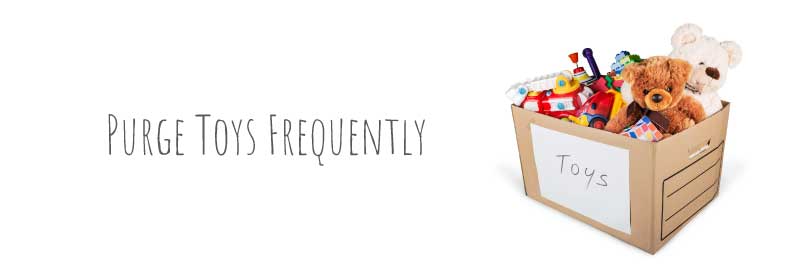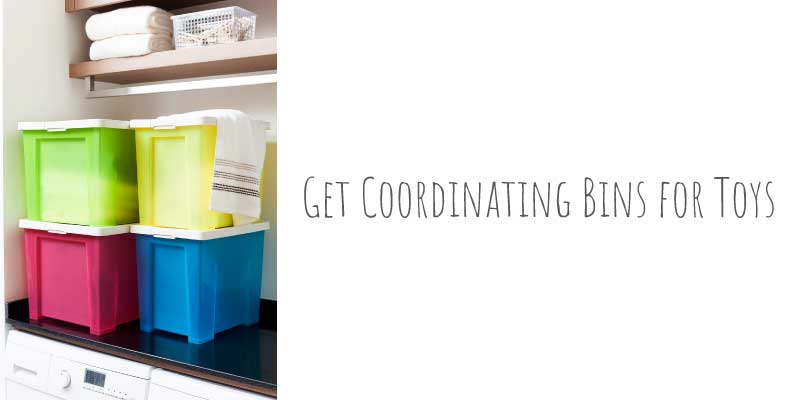Space for Kids: Keeping it Clean
Children are lovely, amazing miracles. They astound us daily with their inquisitiveness, excitement and imagination. They also make it ten times harder to keep a house clean. Yes?
Rooms are hurricane-wrecked minefields of clothes in random piles, plastic beads and/or legos strewn about, a mini-pillow fort, and on and on. And every week, it’s a chore to even ask them to pick up the____ and put it away “where it belongs”.
This scene doesn’t have to be the norm. Really, it doesn’t. There are some tips and tricks you can employ to keep kid-zones contained — and even involve them in the process. Doing this will not only teach them good habits, but will make them feel like they have a big role and are a part of something (which usually translates to: ‘I’m Important’ in kiddo brains). Needless to say, the earlier you can start, the easier the habits will become as they get older (and start to develop their own Pixie Types!).
Read on for some general — and kid-friendly— ways to organize these chaotic spaces. Remember, you’re not looking to reinvent the wheel: you’re looking to declutter, simplify, and streamline your process. If you think that sounds impossible to do with your OWN stuff, just wait. Luckily, we have the answers. For more in-depth ways to keep your child organized according to your type, check out our book on Amazon and find out more!

Purge Frequently
If you’ve got kids, you’ve got toys. And if you’ve got toys, you’ve got more, and more, and more toys on a consistent basis. The toy arsenal grows by the minute. So how to keep up? Well, mostly we will encourage kid involvement, but in this scenario, it might be easiest to do this when they aren’t around. Start with the toys they’ve obviously outgrown and never play with. Get the broken ones of these (and the ones with missing limbs or pieces) into the trash, and the intact ones into a ‘To Donate’ box. If there is a certain toy that has sentimental value to you, you can put it into deep storage. This goes for any sentimental article belonging to your child, whether it be jewelry or little shoes. You have every right to keep the things that matter to you — it’s just that they don’t have to be present in plain sight on the daily, adding to the mess.
Get a big (Big) Floor-to-Ceiling Storage System
One rule of (safety) thumb: if it’s heavy, make sure to have it professionally adhered to the wall before using it. You can have one of these units made of drawers, cabinets, bins, or open shelving — we don’t care, as long as it serves the right function for you and suits your type. Wondering where you might find a system like this one? You can look everywhere from Target (which has individual units you can move together to create one larger unit — and make sure this is super sturdy — or one of our personal favorites, Elfa, which has a completely customizable system to fit whatever size/type space you have.

Get Coordinating Bins for Toys
When your kids are young especially, they will need a built-in safety system in terms of which toys they have access to. Keep the large bins on the floor so that they can have their pick of larger toys and stuffed animals, and use the higher shelves for small toys or toys with small pieces, such as puzzles and the like.
Use Labels with Words AND Pictures
Doing this for the little ones might seem like a no-brainer, but here’s the thing: your goal is to involve them as early as possible, so that they can learn how to pick up after themselves BEFORE they learn it’s not a fun thing to do. They might not be reading superstars yet, but they’ll know what a pony looks like. Use laminate or even labeling tape, and write the word clearly, accompanied by its image counterpart.

Use Short Hanging Rods in Closets
Again, Elfa is a great choice for customizable closet-building (and it’s great for adults, too!).
Design the closets as you would the storage unit — with the easy-to-reach items down below, and the intentionally off-limits items at the top. Make sure your child can see everything when he/she opens the doors, and that access is low and easy. Also, use matching, kid-size hangers. They are easier for kids to hang things on (empowering them to hang their own clothes up themselves) and helps them to see everything in the closet. We like Huggable Hangers for this purpose.
Store Outgrown Clothes and Keepsakes in Bins
Remember those transparent bins we’re always talking about? Use them for this, too. If you’re a parent, chances are you have sentimental attachments to certain items that belong (or once belonged) to your kiddo. Also, kids go through clothes wildly fast. Keep a bin near the closet so you can do quick purges every time there’s a growth spurt. When the bin has reached its limit, go through it, keep the things you love and donate the rest.
Put Sentimental Stuff in Deep Storage
Like we said before about the baby shoes — they do have a purpose. It’s just not right here, right now, in this present moment. Keep things like these in deep storage in a place like the attic.
The Gist
The main thing we’re trying to emphasize with kids and organization is that until they’re old enough to figure out their own methods of organization, they need to be taught. If you’d like a handy reference to figuring out your child’s personality, check out Nurture by Nature: Understand Your Child’s Personality Type: And Become a Better Parent by Paul D. Tieger and Barbara Barron-Tieger. But for the younger years, kids just need to be led, shown and involved in the process.
